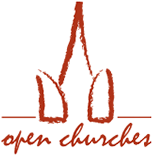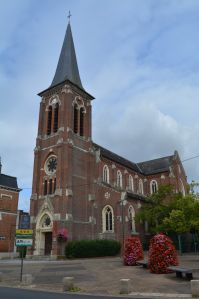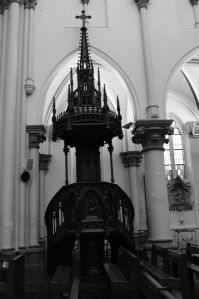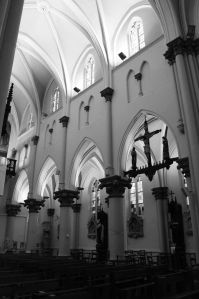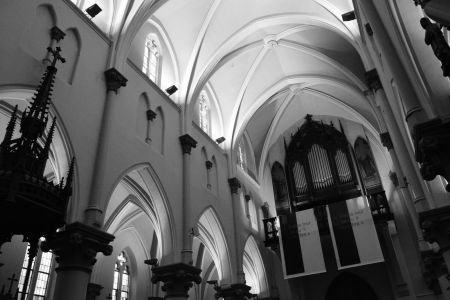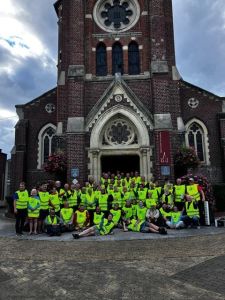Church | 1881 | Neogothic | Catholic Church




Map
Opening hours
01 January - 31 December
Mon
Tue 10.00 - 11.00
Wed
Thu
Fri
Sat
Sun
The installation of a glass door in the forecourt allows you to see the interior of the church outside opening hours: from March 1 to October 1, Tuesday to Sunday, from 10 am to 6 pm.
Opening on August 15 from 10 am to 5 pm on the occasion of the Procession.
Description
On several occasions, the change of place of the statue to another site, ended in failure., particularly during the transfer to the church of Carvin, the next village: the statue always came back to its departure point. This willow trunk and hole became a place of devotion and prayer where the first chapel was built in the 12th century, and which is still visible today, behind the actual church, rue du Cimetière.
A few hundred meters from this first building, a second chapel was built in the 16th century by François de Melun, Lord of Epinoy. It was immortalised by Adrien de Cröy in 1610 in his Albums. During the French Revolution, this chapel was emptied of its ornaments and a part of its furnishings, and the original statue disappeared, replaced by a copy which can still be seen above the main altar today. Each year, on the 15th August, the statue takes part in a procession, starting from the chapel, rue du Cimetière and ending at the church of Notre Dame.
In the 19th century, the territory is marked by the development of the mining industry, causing the massif arrival of a new population (mainly Polish), and the number of inhabitants rose to nearly 10,000. The reconstruction of a third building with the name of Notre Dame, was started in 1881, under the direction of the architect Jean-Baptiste Cordonnier (father of Louis-Marie Cordonnier,) who placed this church perpendicularly to the previous one, using in this manner, some of its elements such as the big stained glass window on the right side. Within, the neo-gothic architecture and the furnishings, whether old or 19th century, mix well and form a harmonious ensemble worthy of interest, such as the baptismal fonts in the second chapel, the main altar with the statue of the Virgin or the beam across the church called a ‘beam of glory’, rarely preserved.
In 2012, the Mining area in which the community of Libercourt is situated was listed as World Patrimony by UNESCO.
Photos
Remarkable elements
Neo-Gothic furniture
All of the church's furniture was created by the workshop of Gustave Pattein, a sculptor in Hazebrouck at the end of the 19th century. It includes the pulpit, the communion bench (which was partially dismantled and moved after Vatican II) and the confessional.
Translated with www.DeepL.com/Translator (free version)
The rood beam
This sculpture hangs beneath the arch of the fourth bay before the choir. It depicts Christ on the cross surrounded by Mary and Saint John. At the bottom is an inscription reading “Mission June 1901 – The grateful parish”.
Translated with www.DeepL.com/Translator (free version)
The paintings in the choir
Installed in the choir panelling, these paintings depict angels with halos kneeling and facing the high altar where the statue of Our Lady of Libercourt stands. They carry attributes such as scales, a cross, a sword, a book and two circular escutcheons representing the monogram of Christ with the letters I P and I C – X C.
Translated with www.DeepL.com/Translator (free version)
Paintings dedicated to the Virgin Mary
On the walls of the building, a series of 13 paintings by the artist Duquesne is dedicated to the Virgin Mary.
Translated with www.DeepL.com/Translator (free version)
The stained glass windows in the transepts
The stained glass windows in the north transept (on the right) depict scenes from the life of Christ: from his birth to the handing over of the keys to Saint Peter. On the other side, in the south transept (left), scenes from the life of Saint Teresa are depicted: from the apparition of the Virgin Mary to her entry into the Carmelite convent. These two windows are signed by the artist Largillier.
Translated with www.DeepL.com/Translator (free version)
